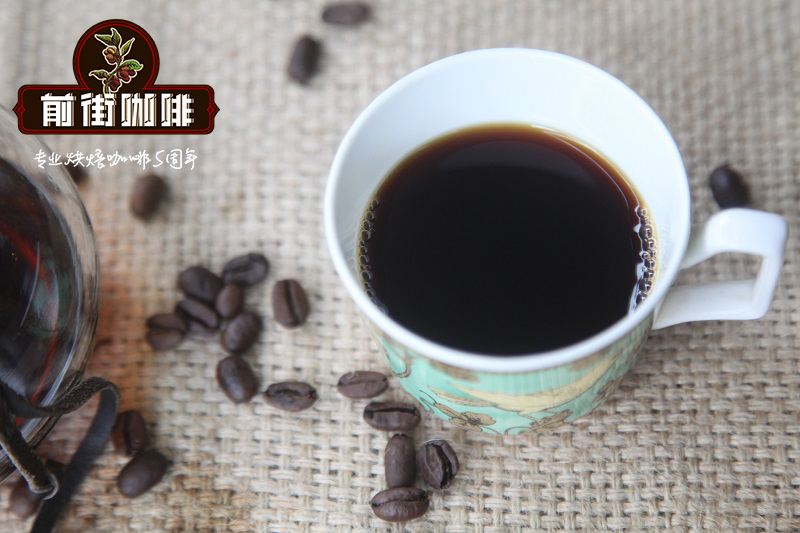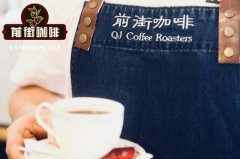Classification of Brazilian coffee beans | Brazilian Santos Stictly Soft extreme temperature and No.2 coffee naming

Professional coffee knowledge exchange more coffee bean information please follow the coffee workshop (Wechat official account cafe_style)
Brazilian coffee bean grading | Brazilian Santos Stictly Soft extreme temperature and No.2 coffee naming?
Brazil is the world's largest coffee producer, accounting for 1/3 of the global consumption of all grades and types of coffee, and occupies a place in the global coffee market. Although Brazil faces several times higher natural disasters than other regions, it has enough acreage to make up for it. There are many kinds of coffee here, but its industrial policy is large and cheap, so there is not much premium coffee, but it is a good choice for mixing other coffees. One of the most famous is Sandos Coffee, which tastes mellow and neutral. It can be boiled directly or mixed with other kinds of coffee beans to form a mixed coffee. It is also a good choice.
Other kinds of Brazilian coffee, such as Rio and Parana, can be produced in large quantities because they do not require too much care. Although the taste is rough, it is a kind of high-quality and inexpensive coffee, which has its own standards because it is distributed all over the country and varies in quality (NO.2--NO.8 according to the number of sundries, NO.13--NO.19 according to the size of beans, and six grades according to taste). Almost all Arabica varieties are of good quality and stable in price. The most famous one is "Brazil Santos", which has been a necessity of blended coffee and is familiar to the public since ancient times. Recently, the "Guilma Cup" is also highly rated. From cheap instant coffee to boutique grade manor beans. Restricted by the natural environment, Brazil's coffee grows at a lower height than its neighbors, only about 600,000,1200 meters above sea level, so it has developed its own ranking. The Soft in the name does not mean that the beans are soft and hard, but that the flavor is mild and supple.
Generally, when you buy Brazilian coffee beans, you will see a description like this: Brazil Santos No.2, No. 19 sieve, very gentle. This is because Brazilian coffee beans are evaluated comprehensively by three methods: defective bean proportion, sieve screen and taste test. The above description is understood as follows:
Brazil-name of the producing country
Santos-export port
2Mel-indicates the grading method for the number of defective beans mixed into, No.2 is the highest grade, and No.8 is the lowest limit of output sales specifications.
Sieve No. 19-indicates that the size of the beans is too small. Brazil means 12-20, and the larger the number, the bigger the particles. "19" means beans that pass through a 54 mm hole mesh. However, this grading method is limited to flat beans, and round beans should be graded with a special oval mesh (8-13).
Extremely mild-indicates the grading of the cup test, extremely mild and the highest.
Here I can also simply popularize the Brazilian cup test grade. From high to low, respectively, Stictly Soft, Soft, Softish, Hard, Riada, Rio, Rio Zona,Hard, including a lower grade, can be regarded as commercial beans.
Level 1: very gentle
Level 2: mild
Level 3: slightly mild
Level 4: difficult
Grade 5: light iodine flavor
Grade 6: strong smell of iodine
The reason why Brazil adopts such a complex method of quality classification is mainly because the production area is too large and produces too many beans.
Qianjie recommended cooking: [V60 hand]
Filter cup: Hario V60
Water temperature: 88 degrees
Degree of grinding: small Fuji degree of grinding 4
Cooking methods: the ratio of water to powder is 1:15, 15g powder, the first injection of 25g water, 25 s steaming, the second injection to 120g water cut off, waiting for the powder bed water to half and then water injection, slow water injection until 225g water, extraction time about 2:00
Analysis: using three-stage brewing to clarify the flavor of the front, middle and back of the coffee. Because the V60 has many ribs and the drainage speed is faster, when the water is cut off, it can prolong the extraction time and better extract the nut and chocolate flavor of the tail section.
Important Notice :
前街咖啡 FrontStreet Coffee has moved to new addredd:
FrontStreet Coffee Address: 315,Donghua East Road,GuangZhou
Tel:020 38364473
- Prev

How to drink Red Wine in the Sun at Aguirate Manor, Costa Rica _ Costa Rican Cold extract Coffee course
For more information on coffee beans, please follow the coffee workshop (Wechat official account cafe_style) Costa Rica Tempranillo Chateau Aquilet, Costa Rica, where wine is sunburned. Costa Rica faces the Pacific Ocean to the west and the Caribbean Sea to the east. Since Costa Rica is located in a volcanic area
- Next

Varma Manor in Guatemala introduces what are the famous coffee producing areas in Guatemala?
Professional coffee knowledge exchange more coffee bean information please follow the coffee workshop (Wechat official account cafe_style) Guatemala is one of the ancient Indian Mayan culture centers. The Peten lowland region of Guatemala was the center of Mayan culture from the 4th to the 11th century, and the ruins of many pyramids and cities left over from this period are still visible today. Latitude of Guatemala
Related
- Detailed explanation of Jadeite planting Land in Panamanian Jadeite Manor introduction to the grading system of Jadeite competitive bidding, Red bid, Green bid and Rose Summer
- Story of Coffee planting in Brenka region of Costa Rica Stonehenge Manor anaerobic heavy honey treatment of flavor mouth
- What's on the barrel of Blue Mountain Coffee beans?
- Can American coffee also pull flowers? How to use hot American style to pull out a good-looking pattern?
- Can you make a cold extract with coffee beans? What is the right proportion for cold-extracted coffee formula?
- Indonesian PWN Gold Mandrine Coffee Origin Features Flavor How to Chong? Mandolin coffee is American.
- A brief introduction to the flavor characteristics of Brazilian yellow bourbon coffee beans
- What is the effect of different water quality on the flavor of cold-extracted coffee? What kind of water is best for brewing coffee?
- Why do you think of Rose Summer whenever you mention Panamanian coffee?
- Introduction to the characteristics of authentic blue mountain coffee bean producing areas? What is the CIB Coffee Authority in Jamaica?

